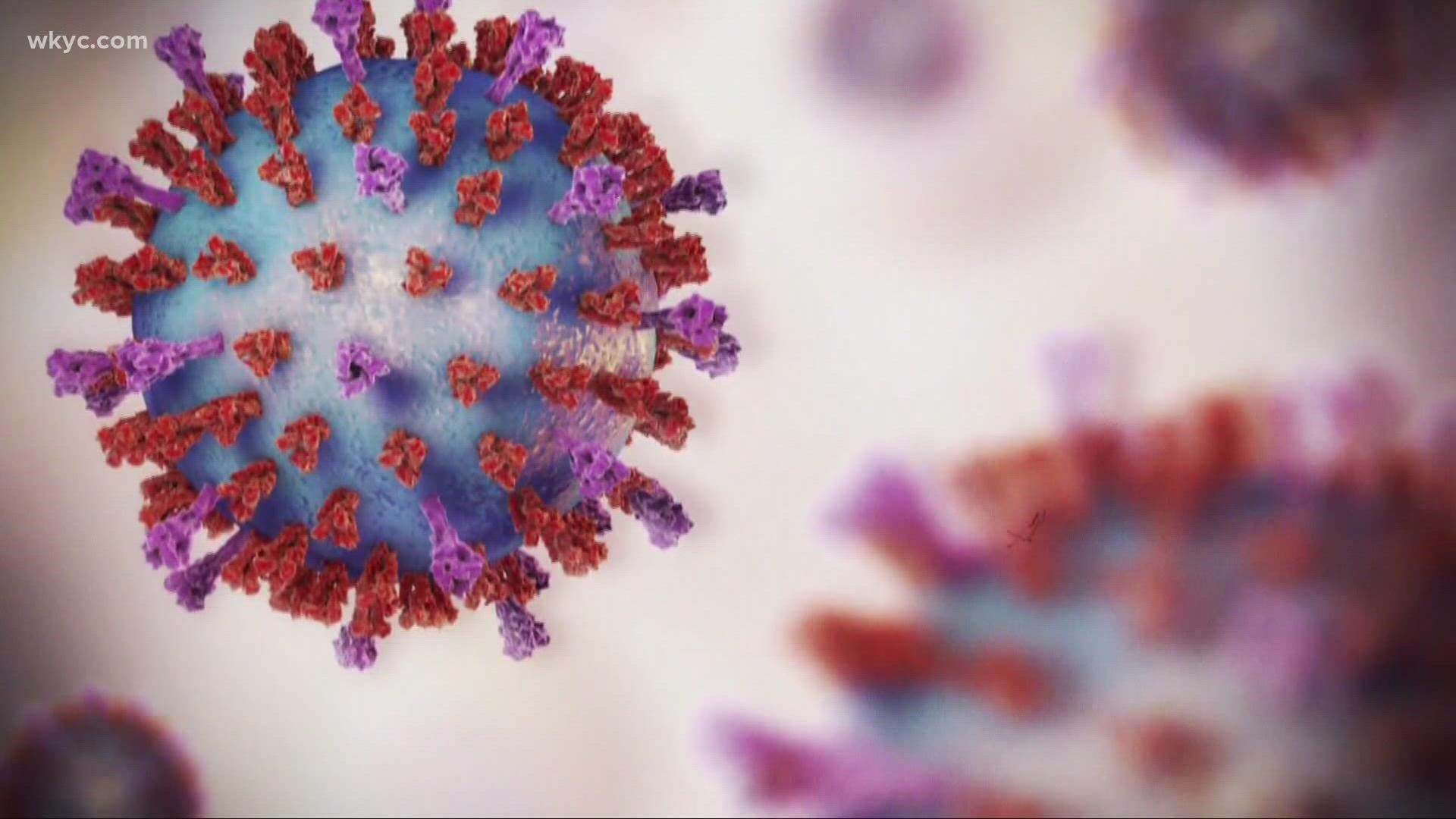CLEVELAND — March 9 marks an important date in the history of our state.
On this date two years ago, Ohio Gov. Mike DeWine announced that the state's first cases of COVID-19 had been confirmed. In fact, there were three confirmed cases on that first day, all in Cuyahoga County. All three patients who tested positive for COVID-19 were their mid-50s. Two were a married couple who had recently been on a cruise on the Nile River, while the other attended a conference in Washington, D.C.
As a response, DeWine declared a state of emergency in Ohio, as "a legal necessity that allows state departments and agencies to better coordinate in their response." In addition, then-Ohio Department of Health Director Dr. Amy Acton said five other people were under investigation for coronavirus, while 11 had tested negative. More than 100,000 people worldwide had been infected by the coronavirus by March 9, 2020, with more than 3,400 deaths.
Just days earlier at a health summit in Columbus, DeWine said, “We are telling all Ohioans go about your business. Live your lives. Do what you need to do. Do not in any way panic.”
Closer to home, then-Cleveland mayor Frank Jackson also held a press conference on March 9, 2020 to announce that no major events in the city were expected to be canceled as a result of the three cases. This included planned rallies by Democratic presidential candidates Joe Biden and Bernie Sanders on the next day, as well as the upcoming Mid-American Conference and NCAA Basketball tournaments.
We know what happened next. The dominoes that marked the normalcy of our lives fell one after the other.
March 10: Biden and Sanders each canceled their respective rallies in Cleveland.
March 11: The World Health Organization declared a pandemic, the NBA suspended its season, Italy closed its shops and restauarants after locking down due to 10,000 reported COVID-19 infections, and actor Tom Hanks announced he was infected while filming a movie in Australia.
Confirmed cases of COVID-19 worldwide ballooned to 125,000, and reported deaths stood at 5,000.
March 12: As he continued with what would become his daily COVID-19 briefings with Acton, DeWine mandated that public gatherings with more than 100 people be canceled and that all Ohio schools move to a 3-week spring break.
On that same day, the Mid-American Conference canceled its basketball tournaments in Cleveland, the OHSAA indefinitely suspended all of its tournaments, and the Rock & Roll Hall of Fame postponed its planned May 2020 induction ceremony.
March 20: Ohio reported its first COVID death. The next day, Gov. DeWine announced Ohio's stay-at-home order.
March 31: Acton spoke with 3News' Russ Mitchell as the pandemic continued to escalate and gave this stunningly accurate prediction: "This is really going to be something we're dealing with over a couple years."
That's how fast everything changed.
Two years later, there are finally signs of hope that the pandemic will soon become an endemic. Masks are finally starting to come off. Events are coming back on. But COVID-19 has taken its toll.
The Ohio Department of Health reports that there have been more than 2 million confirmed cases of coronavirus in the state since that first reported day two years ago. 37,146 Ohioans have died. Just over 57% of the state's population have been fully vaccinated.
On the two-year anniversary of Ohio's first COVID-19 cases, DeWine spoke with 3News' Sara Shookman, and is optimistic that the state's future is getting brighter.
"I'm watching cases go down every single day. They continue to drop. I get those numbers every single day. And you know, the number of people in our hospitals is dropping dramatically every single day, that the count of people who have COVID. So we are clearly headed in the right direction."
Indeed, the state is seeing some of its lowest case numbers in months, something local health officials have taken notice of. However, they continue to urge caution.
"This nice period that we have now is only as good as what the virus allows," Dr. Daniel Culver of Cleveland Clinic said. "We certainly might go back the other direction if we don't at least maintain some degree of reasonable precaution."
Still, with hospitalizations also trending downward and the CDC starting to loosen its mask-wearing guidance, there finally seem to be signs of hope the "endemic" is near.
"This virus has thrown us curveballs already in the last two years, so we hesitate to get too hopeful," Dr. Amy Edwards, pediatric infectious disease specialist at University Hospitals, stated. "But the consensus is not just from me, but from a lot of experts, that we're nearing the end, if we're not already there."
According to Johns Hopkins University, over 450 million people worldwide have been infected with COVID-19, with 6 million dead. In the U.S., there have been more than 79 million cases, with 962,000 deaths.
Previous Reporting:
- COVID-19 in Ohio: State reports 829 new cases in the past 24 hours
- Cleveland Metropolitan School District suspends its mask mandate
- COVID vaccination hits record lull in Ohio; less than 2 in 3 are vaccinated
- Global COVID death toll hits 6 million in 2 years of pandemic
- COVID-19: Health leaders begin to transition nation from pandemic to endemic

